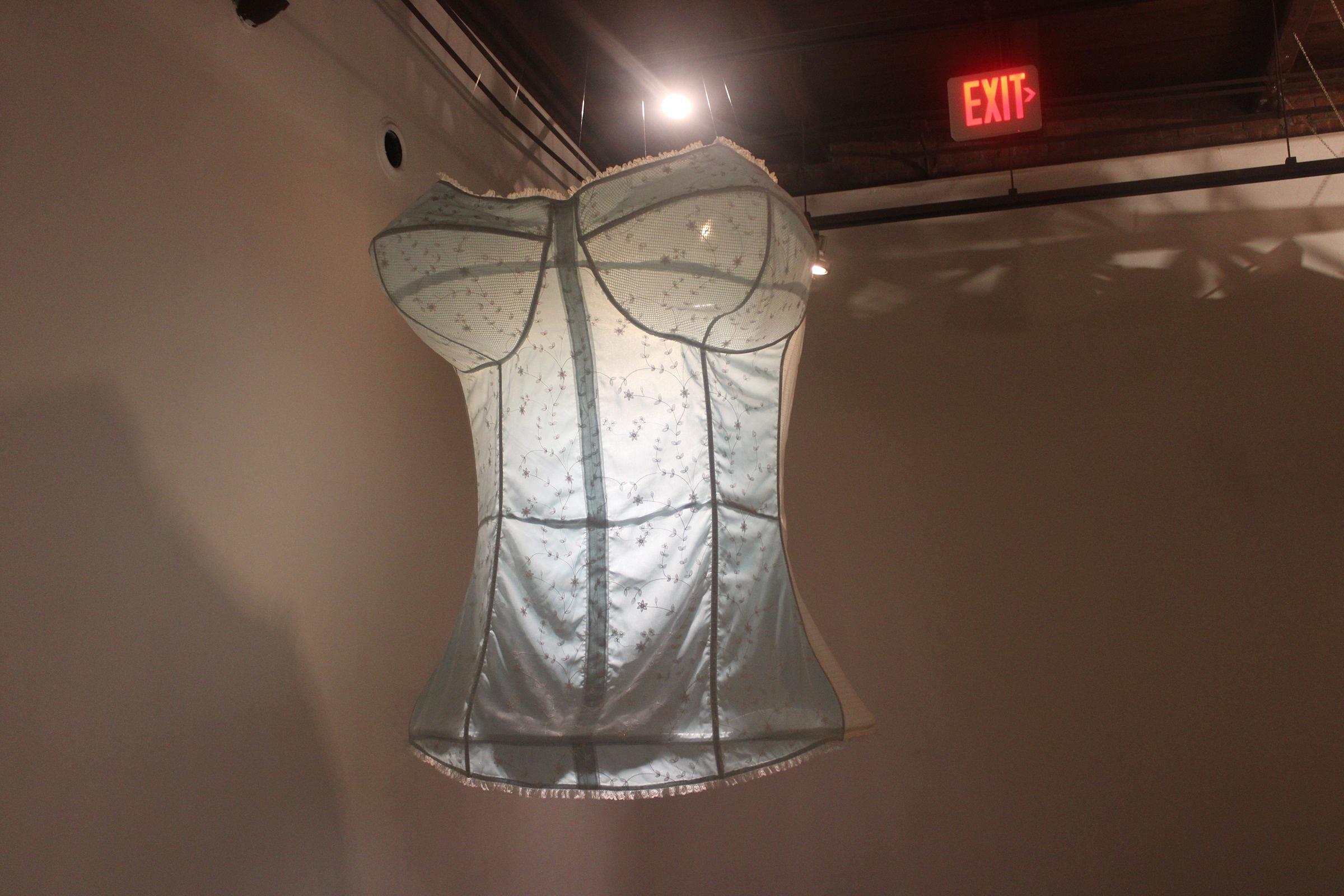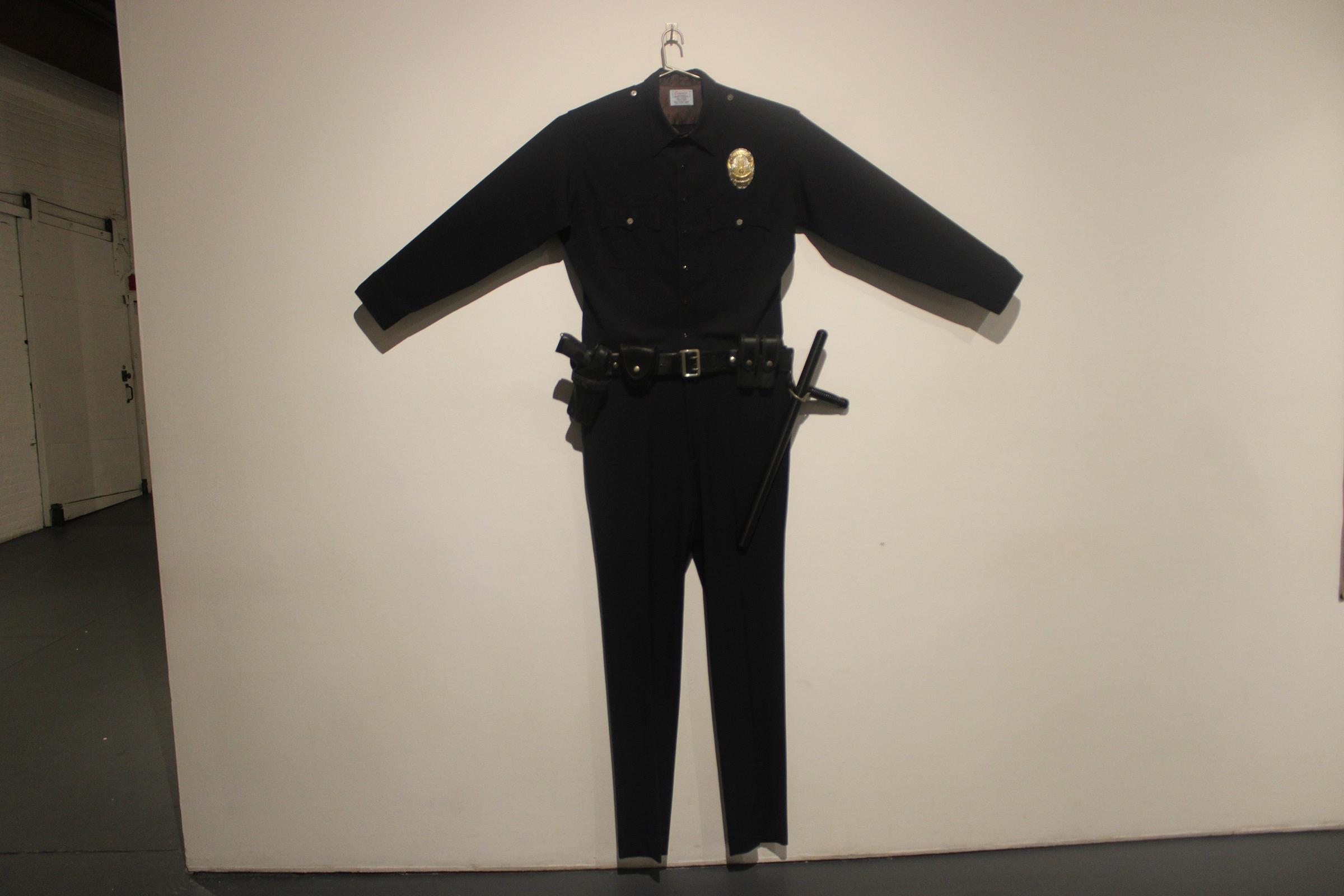No Bodies: Clothing as Disruptor
Real Art Ways
Hartford
March 11, 2024
The clothes we wear say a lot about who we are. But instead of focusing on culture or identity when I went to the No Bodies: Clothing as Disruptor exhibit at Real Art Ways, I thought about my own memories that the exhibit evoked. We wear different things at different points in our lives, and what others wore at those moments leaves an indelible mark as well.

Bustier by Sidney Russell is exactly what it looks like: a giant bustier hanging from the ceiling. She writes, “The large scale makes it almost menacing and ominous.” It may or may not have been her intention, but I’m reminded of the episode of Futurama where the delivery team visits the planet of the giant Amazonian women, and are sentenced to death by “snu-snu,” which is what the Amazonians call sex. All things considered, there are definitely worse ways to go out.

I have a difficult relationship with the police. I don’t think a cop has ever solved a problem that I’ve had, whether it was the multiple times I’ve been robbed, the death threats that put my family in a women’s shelter when I was a kid, or even making the streets of Hartford safe to cross when I’m walking. I haven’t really been antagonized by them either. I guess I’m largely ambivalent towards them in practice, while being openly hostile to the theoretical framework that allows the state to inflict violence on its citizenry, primarily through the police.
L.A.P.D. Uniform, 1993 by Chris Burden seems to embody that framework. When I look at this police uniform, completely devoid of all other context, it looks scary. It’s all black and decked out with multiple tools for restraining and harming people. What part of this uniform says, “To protect and serve?” Taking in the uniform in this manner actually helps me understand why I’ve never been able to turn to the police for help. When the context of this particular uniform is considered — a relic from the Rodney King beating of that year — the distance between the stated purpose of police and the reality only grows wider.

I got married when I was 21 in what you might call a self-imposed shotgun wedding. I’d just found out that my girlfriend of four months was pregnant, so I did what I thought I was supposed to do: I started a family. There was no wedding dress or fancy tuxedo. I walked down to the bodega to ask the guy behind the counter to tie my tie for me, and I got married in my mother-in-law’s living room with ten other people squeezed in. If I spent $1,000 on that wedding, I’d be shocked.
I’ve been divorced for 13 years now, and I think I’m ready to take the plunge again. Wedding Dress by Hannah Conradt makes me think about how I want to go about it this time. Another small ceremony in a familiar place with a few family and friends? Or the kind of blowout extravaganza that puts couples thousands of dollars in debt just as they’re beginning their lives together? The masks that make up the dress make me think about all the weddings that didn’t happen during the pandemic, either because of social distancing or illness or, worse, death. I don’t feel bitter about getting married before, and I’m lucky that I have the chance to do it again.
The clothes I wear today are pretty different from what I was wearing even a year ago, as my career and social circles have changed. I imagine I’ll have a new wardrobe again a year from now. As this exhibit did, those clothes will connect me to a moment in my life, good or bad.
NEXT
No Bodies: Clothing as Disruptor continues at Real Art Ways through April 20.
Jamil goes to TheaterWorks to see a unique performance.






